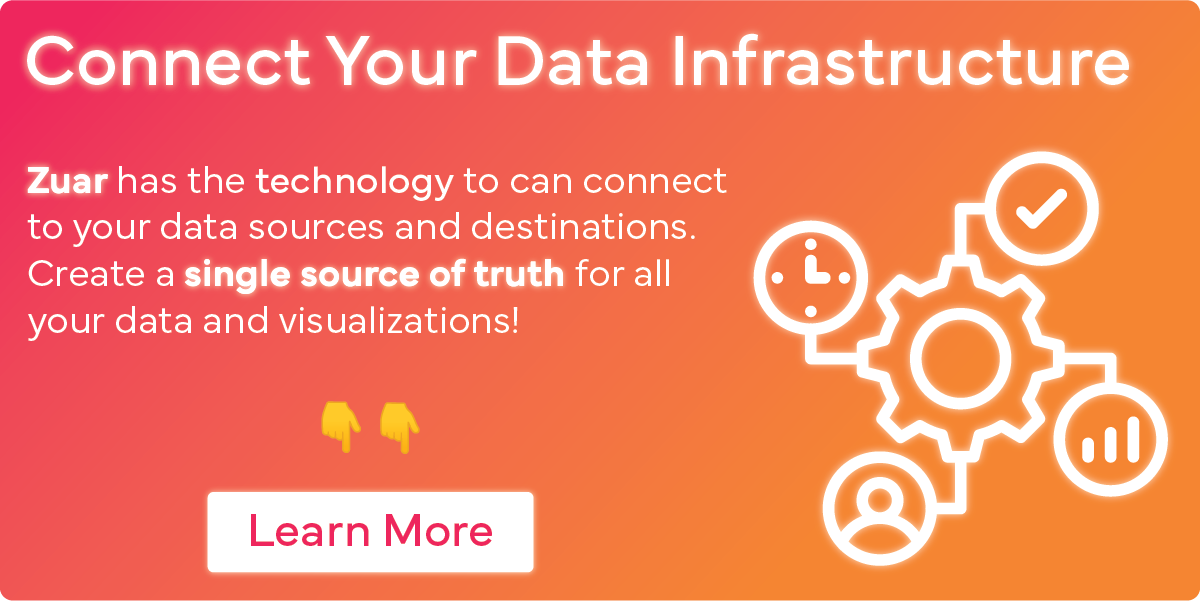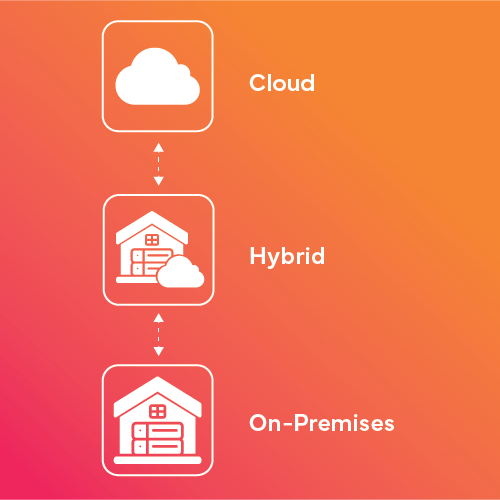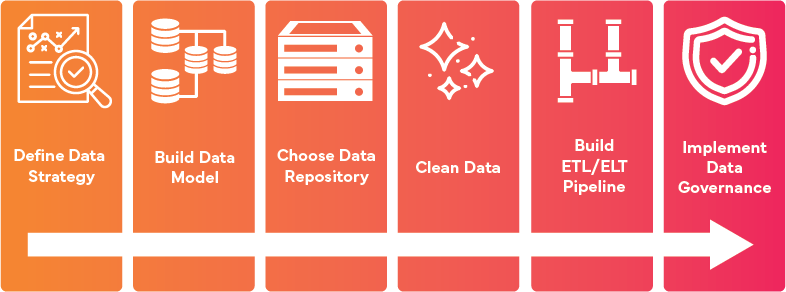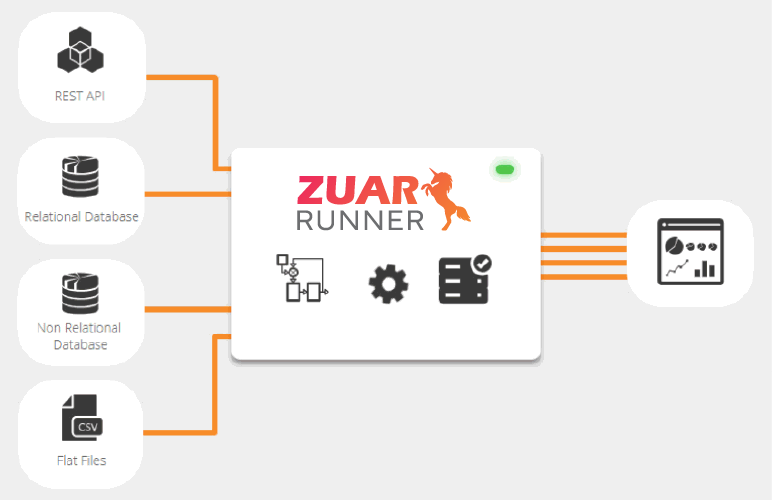What Is Data Infrastructure?
The who, what, why and how of modern data infrastructure.

Overview
In an era where data fuels innovation, businesses navigate a digital landscape shaped by the intricate web of information and technologies. Enter data infrastructure, the engine powering our data-driven world.
From small ventures to large corporations, data infrastructure supports decisions, insights, and data transformation.
The exponential growth of data is reshaping industries, underscoring the need for agile and scalable data infrastructure.
Let's delve into this vital concept to unfold the dynamic interplay of data storage, processing, and management in today's tech ecosystem. We'll explore the architecture that propels modern endeavors, where data isn't just stored—it's orchestrated.

What Is Data Infrastructure?
A data infrastructure represents the foundational framework orchestrating an organization's entire data lifecycle. It encompasses the intricate web of technologies, processes, and practices required to collect, store, process, manage, secure, and extract value from data.
Every element within this infrastructure serves a crucial purpose, from databases that securely house information to data processing pipelines that transform raw data into actionable insights.
The scope of data infrastructure extends beyond hardware and software as it needs people for strategic planning, integration, and maintenance to ensure seamless data flow.
A well-structured data infrastructure becomes the bedrock of data-driven decision-making by managing, storing, processing, and analyzing data efficiently. It empowers organizations to navigate the complexities of the digital age, enabling timely, informed choices that drive success.

Types of Data Infrastructure
The following are the three main types of data infrastructure:

- On-Premises: On-premises data infrastructure refers to setting up and managing data-related hardware, software and resources within the organization's physical premises.
- Cloud-Based: Cloud-based data infrastructure involves utilizing remote servers and services provided by third-party cloud providers. It offers scalability, flexibility and cost-efficiency as organizations pay for the resources they consume.
- Hybrid: Hybrid data infrastructure combines elements of both on-premises and cloud-based solutions. Organizations can keep sensitive or critical data on-premises while leveraging the cloud for additional storage, processing power, or backup capabilities. Additionally, it helps streamline monitoring with hybrid cloud.

Aspects of Data Infrastructure
The modern data infrastructure goes beyond mere storage and processing. It's a complex web of interconnected factors that collectively drive organizational success.
- Data infrastructure is a backbone for data accessibility, ensuring that the right people have the right information when needed.
- Data infrastructure accelerates innovation and data transformation, providing the tools and platforms for data scientists and analysts to uncover insights that ignite business progress.
- It enhances the customer journey through personalized interactions, leveraging past behaviors and preferences.
- Finally, data infrastructure supports business growth by providing a solid foundation for scaling operations and accommodating increasing data volumes.
This interplay of accessibility, innovation, customer-centricity and scalability underscores the multifaceted nature of data infrastructure in today's dynamic business landscape.

What Role Does Data Infrastructure Play in an Organization?
Modern businesses rely on data infrastructure, wielding data as a strategic asset. It enhances decision-making by offering insights from extensive data analysis, empowering decision-makers.
Moreover, robust data center infrastructure ensures data security, governance, compliance, the safeguarding of sensitive information, and adherence to industry regulations.
This infrastructure plays a pivotal role in driving business growth and maintaining competitiveness, facilitating the handling of vast data volumes and complexities. It also enables personalized customer experiences by utilizing previous data to personalize interactions and foster long-lasting client relationships.
In addition, data visualization capabilities integrated within the infrastructure provide intuitive insights, aiding swift and informed decision-making.
Data infrastructure is a lifeblood that feeds every facet of an organization's operations, innovation and customer engagement, while also contributing to improved operational efficiency and cost-effectiveness.


Why Has Data Infrastructure Gotten More Complicated?
Data infrastructure complexity stems from several factors:
- The exponential surge in data creation and consumption, fueled by digitalization and IoT, presents unprecedented challenges in storage and processing.
- Diverse data sources and formats (structured, unstructured, semi-structured, etc.) demand adaptable infrastructure.
- Stringent regulatory and compliance requirements, such as GDPR and HIPAA, mandate the secure handling of data which greatly increases infrastructure complexity.
Consequently, data infrastructure complexity is a response to data volume, variety and velocity, with an estimated 120 zettabytes of data projected to be generated by the end of 2023. And the need to adhere to evolving legal standards, making robust management a prerequisite for success.

How Can Tools Help Manage Data Infrastructure?
Efficient management of data infrastructure is essential for businesses to realize the potential of their data fully, and leveraging technology can greatly streamline this process. Automation plays a pivotal role by automating data workflows, reducing manual intervention, and enhancing operational efficiency.
Through robust monitoring and performance optimization tools, organizations can gain real-time visibility into the health and performance of their data systems.
Equally important are data security tools and privacy measures, which safeguard sensitive information and ensure compliance with regulations.
These tools collectively empower businesses to maximize the value of their data infrastructure, ensuring smooth operations, data integrity, and protection against potential threats.
ETL/ELT tools are a significant part of data workflows, creating automated data pipelines. One example of a powerful ELT tool is Zuar Runner. This end-to-end solution can collect, transform, model, warehouse, and monitor all your data. Learn more...


What Are the Elements of Data Infrastructure?
Data infrastructure comprises several components that collectively enable data storage, processing and utilization.
Physical Infrastructure
This foundational element includes hardware components such as servers, storage devices, and networking equipment. A robust physical infrastructure ensures data accessibility and availability, facilitating seamless data transfer and processing.
Information Infrastructure
This layer encompasses databases, data lakes, and data warehouses, organizing and storing data in a structured manner. It provides the foundation for data analysis and insights, enabling efficient retrieval and utilization of information.
Business Infrastructure
Focused on the strategic use of data, this element involves tools and technologies that aid decision-making. Business intelligence and analytics tools, dashboards, and reporting systems enable organizations to transform raw data into actionable insights, facilitating informed choices and driving growth.
These three elements collaborate to create a comprehensive data infrastructure that supports the entire data lifecycle, from collection to analysis. By optimizing these components, businesses can build a resilient foundation for their data-driven operations, unlocking innovation, efficiency and competitiveness opportunities.

How to Build a Robust Data Infrastructure
Building out such infrastructure can be a daunting task. An understanding of many different technologies is required, from authentication, to API management, to cloud server optimization, etc. Many organizations chose to rely on a trusted 3rd party like Zuar to supplement internal knowledge, ensure best practices, confirm security measures are adequate, and handle the heavy lifting so internal staff doesn't get bogged down.
Zuar is a leader in data solutions, offering software and services designed to transform your data operations to be efficient, automated and data-first:
- Automate the flow of data from hundreds of potential sources into a single destination for analytics, fully prepped and ready for use. The Zuar Runner data pipeline platform makes this possible.
- With Zuar Portal, provide customized, secure, global access to any audience. It's a powerful platform with unrivaled flexibility, able to share information from an infinite number of sources in a central location. Sources such as Tableau, Power BI, ThoughtSpot, Office 360, most cloud platforms, QuickBooks, Zendesk, and many more.
- Zuar's was initially founded as a data and visualization consultancy, helping hundreds of companies get the most from their data. We can help your organization establish a modern data infrastructure, saving both time and budget versus trying to do everything inhouse.
Take the first step today by scheduling a free, no obligation consultation with one of our data experts!




